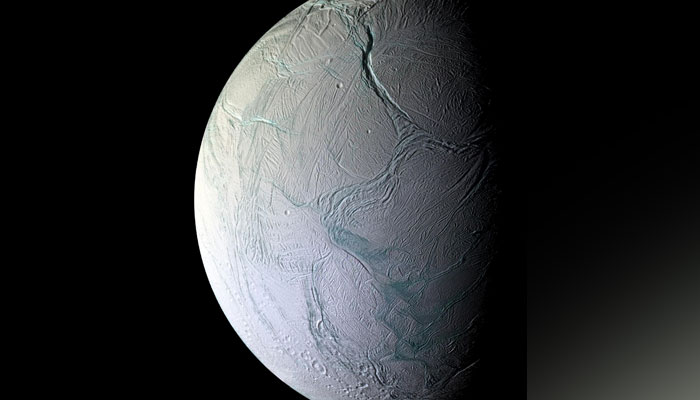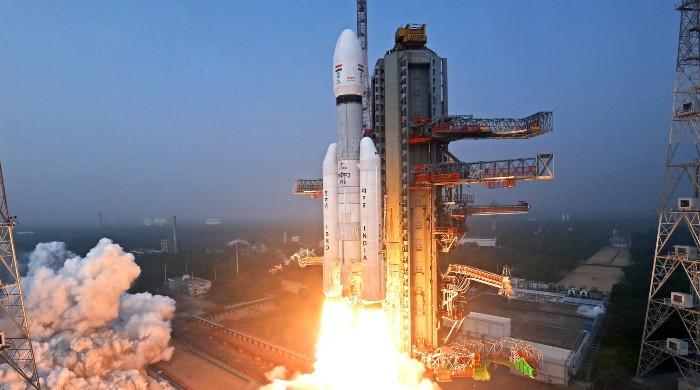James Webb Telescope detects Saturn's moon ejecting water into space
Enceladus fascinates astronomers because of its salty ocean which scientists believe could support life
May 31, 2023

James Webb Space Telescope (JWST) has detected a stream of water vapour spanning 9,600km rising into space from Saturn’s icy moon Enceladus — 504km-wide and famously known for its spray of water, reported BBC Wednesday.
Enceladus fascinated astronomers because of its salty ocean which scientists believe could support life.
The evidence collected by Nasa's Cassini mission (2004-2017) revealed the chemical composition by flying through streams.
There were also other plumes detected however, this one was different.
According to the European Space Agency (ESA), it calculated the rate at which the "water was gushing out at about 300 litres per second. This would be sufficient to fill an Olympic-sized swimming pool in just a few hours."
The properties of the plume were mapped by JWST's extremely sensitive Near-Infrared Spectrograph (NIRSpec) instrument which revealed "how much of the vapours (about 30%) feeds a fuzzy torus of water co-located with one of Saturn's famous rings — its so-called E-ring."
The findings by the astronomers were written in the journal Nature Astronomy.
Professor Catherine Heymans, Astronomer Royal for Scotland said: "The temperature on the surface of Enceladus is minus 200 degrees Celsius. It's freezing cold."
"But at the core of the moon, we think it's hot enough to heat up this water. And that's what's causing these plumes to come out."
"We know deep in our own ocean on planet Earth, in these sorts of conditions, life can survive. So that's why we're excited to see these big plumes at Enceladus. They will help us understand a bit more about what's going on, and how likely it is that life could exist, but it's not going to be life like you and me — it would be deep-sea bacteria," she told the BBC.
The astronomers have suggested a Nasa mission called the Enceladus Orbilander that would try to resolve the open question about life.
As the name implicitly states, this mission would orbit the moon to collect geysers like Cassini.
For the time being, Nasa and Esa have their spacecraft headed to the ice-covered moons of the gas giant Jupiter.
These moons also have deep oceans which could become a potential place which could host life given their sheer size.
It is not known for how long did Enceladus hold water in a liquid state — key to supporting life. Enceladus may have been frozen for too long for life to begin.
On the contrary, Jupiter's bulkier moons, such as Europa and Ganymede may have had the heat energy to keep water in liquid form over a much greater period of time.









